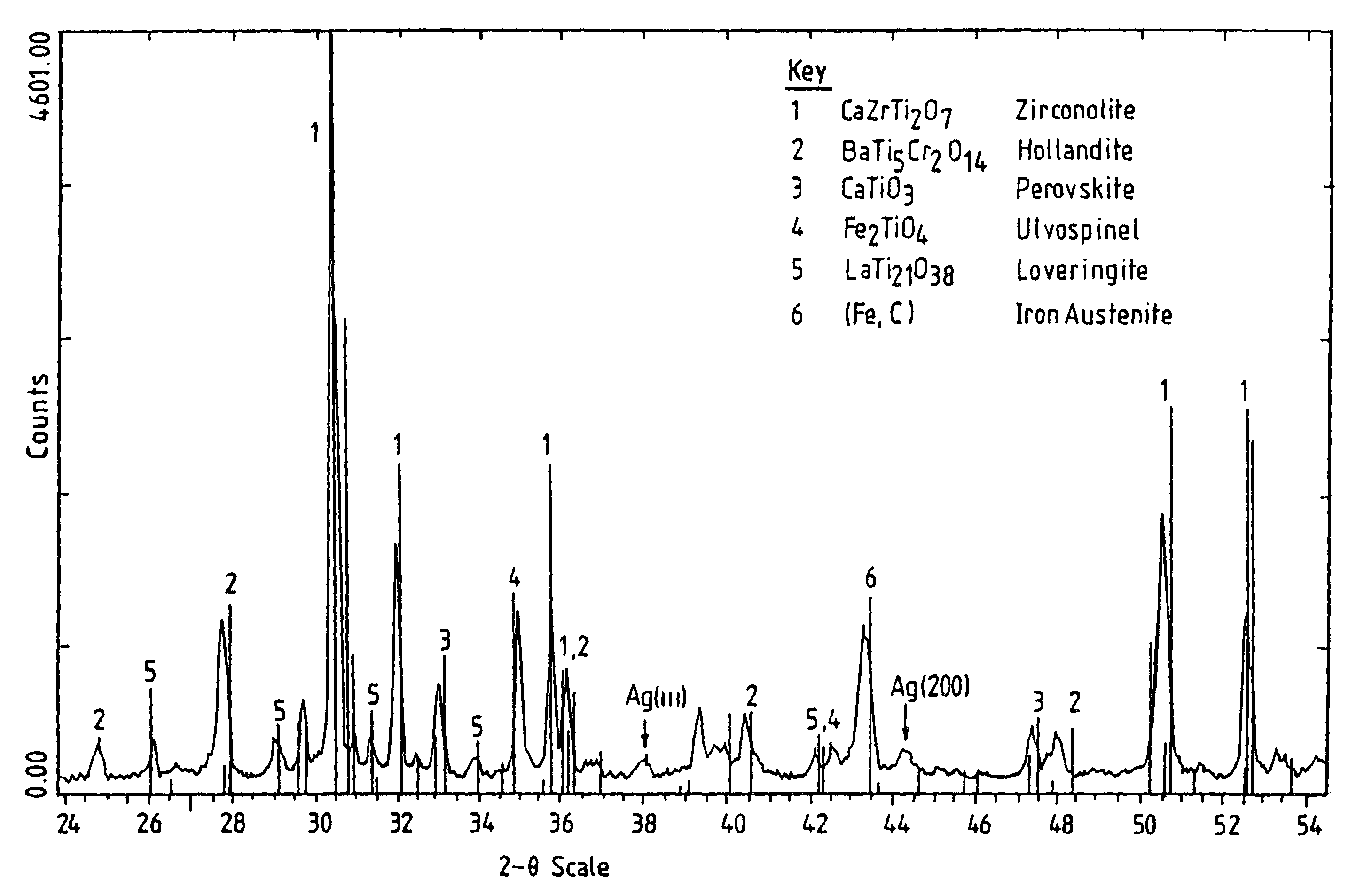Encapsulation of waste
a technology of encapsulation and waste, applied in the field of ceramic materials, can solve the problems of reducing the flexibility of the plant, and reducing the volume of high-level waste produced, so as to reduce the total waste volume, improve the flexibility of the plant, and maintain the effect of precursor feed ra
- Summary
- Abstract
- Description
- Claims
- Application Information
AI Technical Summary
Benefits of technology
Problems solved by technology
Method used
Image
Examples
example 1
[0068]In the encapsulation of a real waste from Advanced PUREX reprocessing, the denitrated waste liquor containing the waste ions to be encapsulated will be blended with the precursor containing the TiO2, CaO and BaO to form the slurry mixture. The slurry will then be dried and calcined as described above.
[0069]For experimental convenience, however, the mixture of waste ions and TiO2, CaO and BaO in this example was prepared by a slightly different route. Provided there has been homogenous mixing, the manner of forming the slurried mixture of waste, TiO2, CaO and BaO is not important, as the calcining step renders the history of the slurry irrelevant.
[0070]The composition of the simulated waste used in the experiment is given in Table 2. The relative amounts of the components in weight % are based on the oxides. The list of components in Table 2 does not include all of the components listed in Table 1 because many of the components were replicated by a simulant. Neodymium was used ...
example 2
[0079]The ability to immobilise different waste stream compositions due to different reactor fuel assembly designs was investigated. The fuel assembly compositions and waste stream compositions for various fuel assembly types denoted A–H for both PWR and BWR plants are given in Tables 3 and 4. Table 3 contains the raw data for each fuel assembly type whilst in Table 4 these figures have been converted to the waste oxides in the raffinate per tonne of fuel reprocessed—this conversion has been carried out because the chemical separation stage in a reprocessing plant operates on a throughput based on tonnes of fuel per day. It was investigated whether improved plant flexibility could be achieved by using a single precursor formulation and constant precursor feed rate for all assembly types. Consequently, in this example it was tested whether the same precursor could be used at a fixed quantity per tonne of fuel reprocessed for the range of different fuel assembly and waste compositions...
PUM
| Property | Measurement | Unit |
|---|---|---|
| weight % | aaaaa | aaaaa |
| weight % | aaaaa | aaaaa |
| weight % | aaaaa | aaaaa |
Abstract
Description
Claims
Application Information
 Login to View More
Login to View More - R&D
- Intellectual Property
- Life Sciences
- Materials
- Tech Scout
- Unparalleled Data Quality
- Higher Quality Content
- 60% Fewer Hallucinations
Browse by: Latest US Patents, China's latest patents, Technical Efficacy Thesaurus, Application Domain, Technology Topic, Popular Technical Reports.
© 2025 PatSnap. All rights reserved.Legal|Privacy policy|Modern Slavery Act Transparency Statement|Sitemap|About US| Contact US: help@patsnap.com


